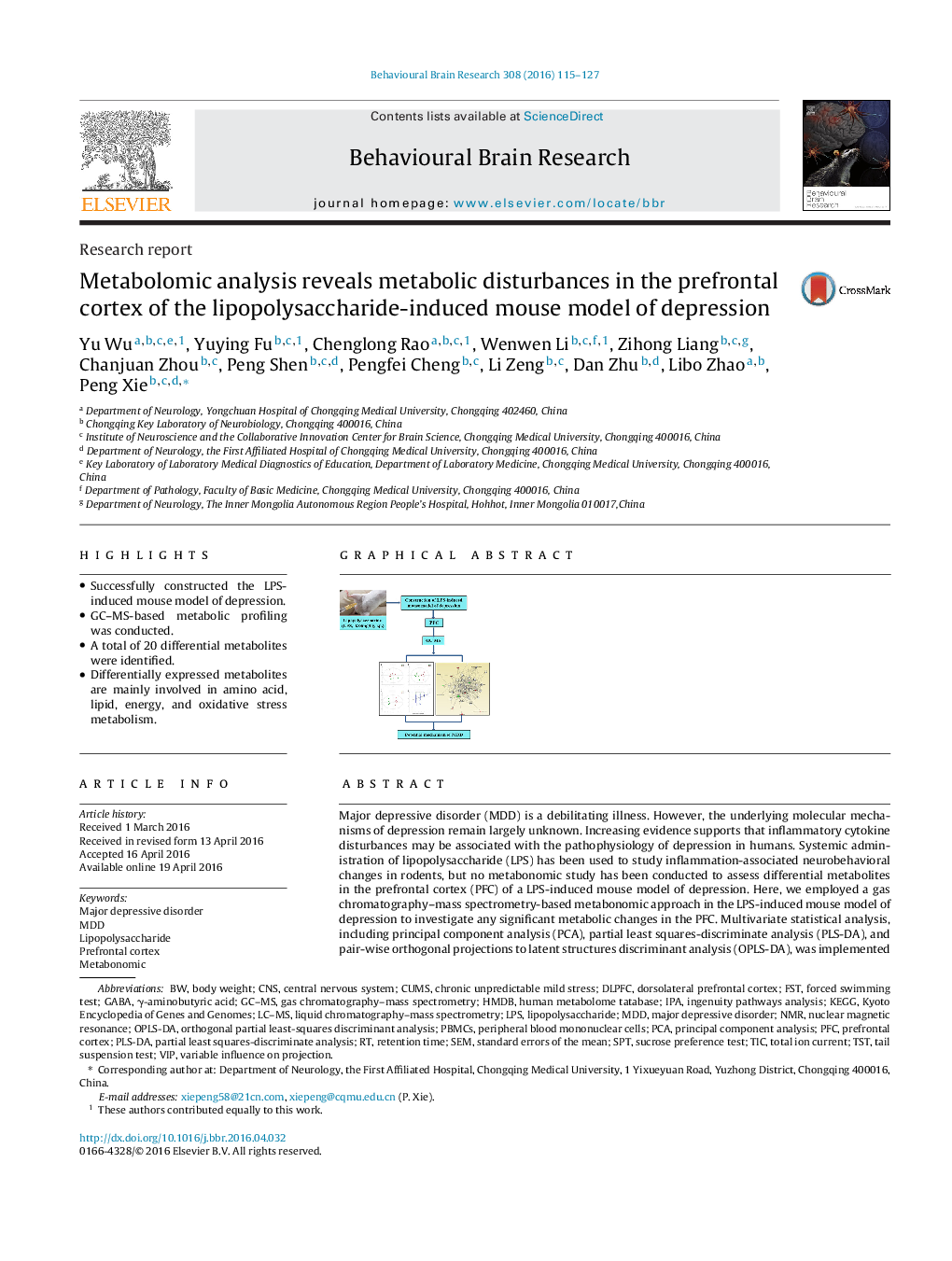| کد مقاله | کد نشریه | سال انتشار | مقاله انگلیسی | نسخه تمام متن |
|---|---|---|---|---|
| 6256019 | 1612925 | 2016 | 13 صفحه PDF | دانلود رایگان |
- Successfully constructed the LPS-induced mouse model of depression.
- GC-MS-based metabolic profiling was conducted.
- A total of 20 differential metabolites were identified.
- Differentially expressed metabolites are mainly involved in amino acid, lipid, energy, and oxidative stress metabolism.
Major depressive disorder (MDD) is a debilitating illness. However, the underlying molecular mechanisms of depression remain largely unknown. Increasing evidence supports that inflammatory cytokine disturbances may be associated with the pathophysiology of depression in humans. Systemic administration of lipopolysaccharide (LPS) has been used to study inflammation-associated neurobehavioral changes in rodents, but no metabonomic study has been conducted to assess differential metabolites in the prefrontal cortex (PFC) of a LPS-induced mouse model of depression. Here, we employed a gas chromatography-mass spectrometry-based metabonomic approach in the LPS-induced mouse model of depression to investigate any significant metabolic changes in the PFC. Multivariate statistical analysis, including principal component analysis (PCA), partial least squares-discriminate analysis (PLS-DA), and pair-wise orthogonal projections to latent structures discriminant analysis (OPLS-DA), was implemented to identify differential PFC metabolites between LPS-induced depressed mice and healthy controls. A total of 20 differential metabolites were identified. Compared with control mice, LPS-treated mice were characterized by six lower level metabolites and 14 higher level metabolites. These molecular changes were closely related to perturbations in neurotransmitter metabolism, energy metabolism, oxidative stress, and lipid metabolism, which might be evolved in the pathogenesis of MDD. These findings provide insight into the pathophysiological mechanisms underlying MDD and could be of valuable assistance in the clinical diagnosis of MDD.
109
Journal: Behavioural Brain Research - Volume 308, 15 July 2016, Pages 115-127
